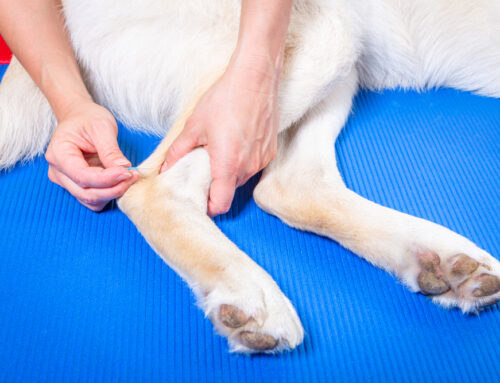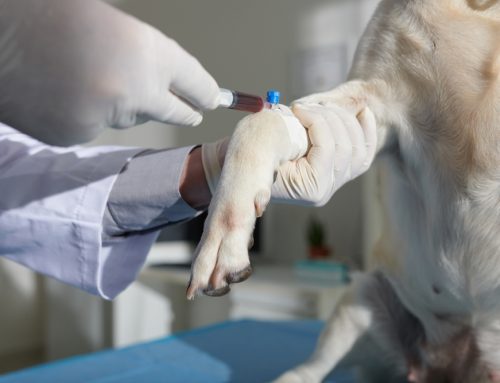Seasonal Allergies in Pets: How to Soothe the Itch
If your dog has suddenly turned into a full-time scratcher, licker, or head-shaker- especially during certain times of year- there’s a good chance seasonal allergies are to blame. At Pinedale Animal Hospital, we’ve helped countless pets (and their tired owners) find relief from the endless cycle of itching, paw chewing, and ear troubles.
The good news? With a mix of medical support, environmental changes, and skin-focused care, most seasonal allergies are manageable. The key is knowing what to look for and how to respond early.
Let’s dig into the causes, symptoms, treatments, and prevention strategies that can help your dog feel better all year long.
What Exactly Are Seasonal Allergies in Pets?
Seasonal allergies, also called atopic dermatitis, are caused by a pet’s immune system overreacting to common environmental allergens like pollen, mold, or dust mites. These allergies typically flare up during spring, summer, or fall- but symptoms can linger even after pollen season ends if irritation and inflammation are left untreated.
Unlike food allergies (which persist year-round), seasonal allergies come and go depending on environmental exposure.
Key allergens include:
- Tree, grass, or weed pollen (especially in spring and early summer)
- Mold spores (common in damp or humid environments)
- Dust mites and other indoor particles
Some breeds are genetically more likely to develop allergies, including Bulldogs, Retrievers, Terriers, and Boxers. Poor grooming habits and compromised skin barriers can make symptoms worse.
Learn more from AKC’s overview on the different types of dog allergies.
Signs Your Pet Might Be Suffering
Seasonal allergies can be tricky to spot at first. Unlike people, dogs don’t usually sneeze or get a runny nose right away. Instead, the signs often show up through the skin.
Common Symptoms:
- Excessive licking or chewing (especially paws, belly, ears, or base of tail)
- Hair loss or scabbing; red, inflamed, or thickened skin
- Recurrent ear infections or smelly discharge, frequent ear scratching or head-shaking
- Sneezing or watery eyes (more common in cats)
Need help identifying an allergic reaction? Purdue’s allergy tips for small animals offer practical advice for spotting early signs.
When Allergies Go Untreated: What Can Happen?
Without treatment, allergies can escalate from mild discomfort to chronic skin disease. Here’s a progression snapshot:
| Stage | Symptoms | Potential Risks |
| Early | Light scratching, red skin, occasional sneezing, irritated eyes, itchy ears | Often missed or mistaken for minor irritation |
| Moderate | Hot spots, licking until raw, ear infections | Secondary bacterial or yeast infections |
| Severe | Thickened skin, hair loss, chronic distress | Long-term discomfort, sleep loss, behavioral changes |
Chronic skin inflammation can eventually cause lichenification (thick, leathery skin) and hyperpigmentation, especially on paws and armpits. According to the Merck Veterinary Manual, untreated pruritus (itchiness) is one of the top reasons dogs are brought to the vet.
Diagnosing Allergies: What to Expect at Pinedale
At Pinedale Animal Hospital, we start with a thorough physical exam and detailed history. Because other issues- like flea allergy dermatitis, parasites, or food sensitivities- can mimic seasonal allergies or make the symptoms worse, we aim to rule out other causes before confirming an allergy diagnosis.
Depending on your pet’s symptoms, we may recommend:
- Skin cytology: This in-clinic test helps us identify secondary skin infections by examining cells under a microscope. It can reveal bacteria, yeast, mites, or other skin problems that might be contributing to the itch.
- Culture and sensitivity testing: If infections keep coming back, this test helps us determine which specific bacteria are present and which medications will work best.
- Bloodwork: A full panel can uncover underlying conditions- like hypothyroidism or hormonal imbalances- that may be contributing to your pet’s skin issues or preventing them from healing properly.
- Food trials: Since food allergies can mimic seasonal ones, we may recommend a strict elimination diet to rule out food as the culprit.
- Parasite prevention trials: Some allergic pets benefit from intensified flea and parasite control, especially if there’s a history of flea allergy dermatitis.
If seasonal allergies remain the most likely cause, we may move forward with:
- Intradermal skin testing (gold standard): Small amounts of allergens are injected into the skin to observe reactions and identify specific triggers.
- Serum allergy testing: A blood test that measures your pet’s immune response to various environmental allergens.
Our full diagnostic capabilities allow us to detect and treat both the underlying allergy and any complications early- helping your pet feel better, faster.
Treatment Options: Building a Care Plan
There’s no cure for allergies, but that doesn’t mean your pet has to suffer. Our goal is to reduce symptoms, prevent flare-ups, and strengthen the skin barrier.
Medical Treatments May Include:
- Antihistamines: Mild relief in some pets.
- Steroids or immunosuppressants: Fast-acting for severe flares, but used cautiously.
- Cytopoint or Apoquel: Targeted allergy medications that reduce itch without steroids.
- Allergen-specific immunotherapy: Allergy “shots” or oral drops based on test results.
- Topical therapy: Medicated shampoos, sprays, or mousses can help remove allergens and soothe irritated skin.
- Infection management: Antibiotics or antifungal treatments when needed.
At-Home Support for Itchy Dogs
Supporting your pet between visits makes a big difference. Here are some practical steps you can take:
- Regular grooming: Bathing every 1–2 weeks with hypoallergenic shampoo helps wash away allergens. The ASPCA explains why grooming is essential.
- Ear care: Allergies often show up in the ears first. Use a vet-approved cleaner like the one recommended by Cornell University’s canine ear care guide.
- Foot care: Try daily paw wipes or gentle Epsom salt soaks to remove irritants.
- Environmental changes: Wash bedding weekly, vacuum often, and use air purifiers to reduce indoor allergens.
- Nutritional support: Diets rich in omega-3 fatty acids or hypoallergenic ingredients may improve skin health. Here’s how nutrition impacts dermatitis.

Preventing Allergy Flares Before They Start
While you can’t completely eliminate allergens, you can lower your pet’s exposure with a few proactive steps:
- Year-round parasite prevention: Fleas and other pests can worsen allergy symptoms. Here’s why it matters.
- Clean living space: Keep your home free of excess dust, mold, and tracked-in pollen.
- Allergy-friendly routines: Wipe paws and bellies after walks. Use pet-safe wipes or rinses when pollen levels are high.
Common Questions from Concerned Pet Owners
Can allergies cause hives in dogs?
Yes. Raised welts or bumps can appear suddenly. Learn more about hives due to allergies.
Will my pet need allergy meds forever?
Not always. Some pets improve with seasonal treatment only, while others benefit from long-term management.
Is this just itchy skin- or something more?
Allergies are the most common cause of itching, but underlying infections, parasites, or endocrine diseases can present similarly. An exam is the only way to know for sure.
Get Help Sooner, Not Later
At Pinedale Animal Hospital, we take allergies seriously- because we’ve seen what happens when they go unchecked. From advanced testing to compassionate support and realistic home care advice, we’re here to help both you and your pet breathe easier.
If your dog is scratching, licking, or just seems off this season, don’t wait. Contact us to schedule an exam or ask about allergy testing options. Together, we’ll get to the bottom of the itch and bring your pet some much-needed relief.








Leave A Comment